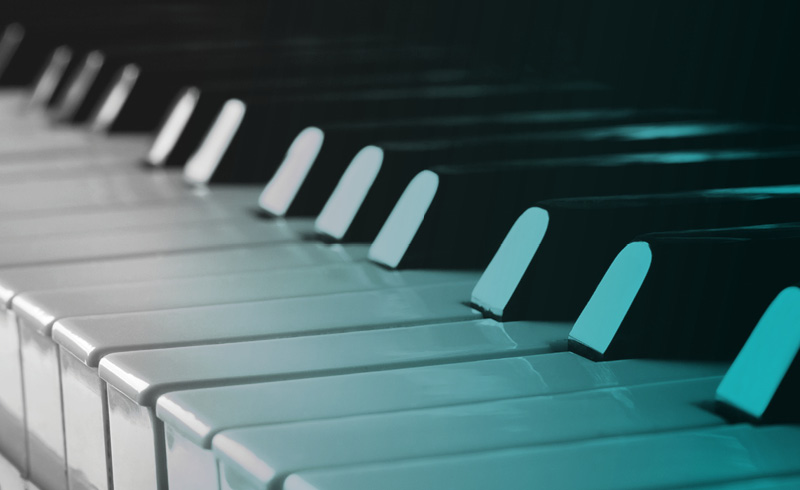
March 7, 2025
A Guide to Rachmaninoff’s Rhapsody on a Theme of Paganini
After Rachmaninoff fled Russia in 1917, he composed only six original pieces during the remaining twenty-five years of his life. Having lost nearly everything in the revolution, he was determined to restore his family to its former standard of living as quickly as possible, which meant giving up composing in favor of pursuing a career as a touring piano virtuoso. A grueling performance schedule, periodic health problems and homesickness made composing increasingly difficult, and the less than enthusiastic reception of his Fourth Piano Concerto, his first composition in exile, only fed his doubts and self-criticism.
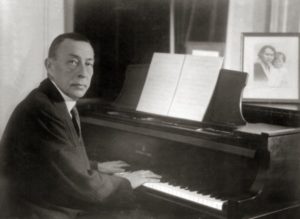
Rachmaninoff finally found some stability when he was able to build a home for his family on the shores of Lake Lucerne in the 1930s. There, during the summer of 1934, the 61 year-old composer was once again struck with inspiration, and “working literally from morn to night” completed a masterpiece that would at last equal the success of his earlier works.
Like Brahms and Liszt before him, Rachmaninoff had been inspired by a simple tune by the early nineteenth-century violin virtuoso, Niccolò Paganini. Paganini had revolutionized violin playing; many of his compositions were so difficult that initially only he could play them. Even during his life, a legend that he had sold his soul to the devil in exchange for his preternatural abilities became so widespread that the Catholic Church refused him burial service upon his death. Paganini himself claimed that his talent came from God, but his gaunt appearance, unusual name (Paganini means “little pagan” in Italian) and infamous womanizing did not help his case in the eyes of the public. In any case, the legend likely sold more tickets.
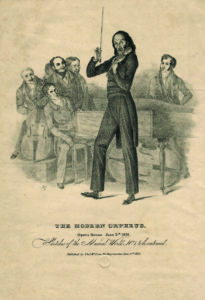
Perhaps Paganini’s most celebrated original works were his 24 caprices for solo violin, the last of which was a theme and variations. The simple tune that began it became a symbol of virtuoso technique, inspiring generations of composers to use it as the basis of their own fiendishly difficult variations.
In his Rhapsody on a Theme of Paganini, Rachmaninoff composed a concertante work for solo piano and orchestra consisting of 24 variations on the theme. The premiere was given in Baltimore by the Philadelphia Orchestra with Rachmaninoff as soloist and Leopold Stokowski conducting (Stokowski would later become music director of the Houston Symphony in 1955). The public response was so overwhelming that Rachmaninoff was taken aback, saying “It somehow looks suspicious that the Rhapsody has had such an immediate success with everybody.” He had nothing to fear however; the Rhapsody has been a cornerstone of the repertoire ever since.
A Secret Program?
A few years later, the celebrated choreographer Michel Fokine approached Rachmaninoff hoping that the two could collaborate. In response, Rachmaninoff suggested the Rhapsody, and provided the outline of a scenario for the ballet. It is impossible to determine how much of this scenario was in Rachmaninoff’s mind as he wrote the piece and how much he invented after the fact, but for a composer who was notoriously reticent about his sources of inspiration, it is a fascinating document nevertheless. In it, Rachmaninoff explained how the Rhapsody could tell the story of Paganini, his deal with the devil and his doomed love for a woman.
The Rhapsody begins with a short introduction that unexpectedly leads not to the theme, but to the first variation: a pared-down outline of Paganini’s melody:
This unconventional beginning was likely inspired by the finale of Beethoven’s Symphony No. 3, Eroica (his “Heroic” Symphony), a theme and variations that begins in much the same way. We then hear the theme presented in the violins as the piano takes up the simplified notes of the first variation. At this point, Rachmaninoff tells us, “Paganini himself makes his first appearance…” The following variations offer the piano soloists many opportunities for virtuoso display, reflecting Paganini’s own legendary skill.
Then the music slows, and the seventh variation presents us with a new melody: the Dies Irae. The Dies Irae was a medieval chant from the traditional Catholic mass for the dead that described the “day of wrath,” the last judgment at the end of the world. Ever since Berlioz had used it in the “Witches Sabbath” movement of his Symphonie fantastique, it had become a symbol of death and demonic forces in music. It was a melody that particularly haunted Rachmaninoff, who used it in several of his compositions (perhaps most notably in his Böcklin-inspired tone poem, The Isle of the Dead).
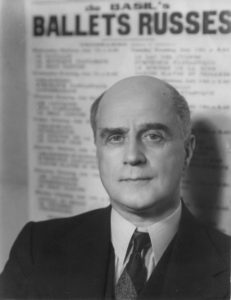
Ingeniously, Rachmaninoff discovered that the Dies Irae was related to Paganini’s theme in such a way that the one could be a variation of the other. In his ballet scenario, Rachmaninoff tells us “All variations on the Dies Irae would be for the evil spirit…The first appearance of the evil spirit is in the 7th variation, where at #19 there can be a dialogue with Paganini during his theme as it merges with the Dies Irae.” Here the music slows, and we hear the piano play a simple, chordal version of the dies irae, accompanied by bassoons and pizzicato cellos. The ensuing variations become increasingly demonic, with one featuring the strings playing col legno (with the wood of the bow), an especially creepy effect. Sure enough, Rachmaninoff explains: “Variations 8, 9, 10—progress of the evil spirit.”
“Variation 11 is the transition to the realm of love,” he continues. “Variation 12—the minuet—is the first appearance of the woman…” Variation 11 begins softly with tremolo strings accompanying quasi-improvised and highly chromatic passages in the piano. The slow, graceful minuet features the soloist above a delicate pizzicato string accompaniment. “The whole middle from the 11th variation to the 18th—these are the love episodes.”
These variations contain a wide variety of moods and characters, from the heroism of the 14th variation to the tenderness of the 18th, the most famous part of the entire work. Even without Rachmaninoff’s notes, the expressive intent of this gorgeous melody has always been clear. Emerging as a solo for piano alone after a dark and mysterious variation, this love theme is in fact closely derived from an inversion of Paganini’s original melody.
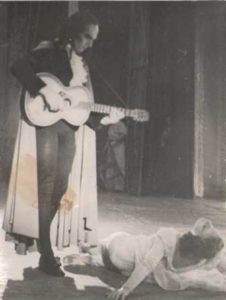
“Variation 19 is the triumph of Paganini’s art, his diabolic pizzicato.” Indeed, Rachmaninoff marked the pianist’s pointillistic passagework “quasi pizzicato,” suggesting that he had this idea in mind when composing. In the following variations, the tension increases as the soloist executes ever more astonishing feats of virtuosity. At last, “defeated,” Paganini “appears for the last time at the 23rd variation—the first 12 bars—after which, to the end, is the triumph of his conquerors.” This 23rd variation begins with the return of the original theme in the piano, which, after 12 bars, is abruptly cut off by the orchestra, which apes the theme with a sudden, jarring key change. Interestingly, Rachmaninoff says, “And it also seems to me that at the conclusion of the play the several personages [representing] the evil spirit should be caricatures, absolute caricatures, of Paganini himself.” The rhapsody ends with a grotesque parody of the triumphant Dies Irae for full orchestra. While Paganini might have met his downfall, the piano soloist gets the last laugh, concluding the work with a wink and a smile.
Ever self-critical, Rachmaninoff modestly ended his note with “You’re not laughing at me? How I wish I could see you, to tell you more fully about all this—if my ideas and subject seem interesting and of value to you.” Contrary to Rachmaninoff’s fears, Fokine was intrigued, and ultimately did turn the Rhapsody into a ballet which met with great success at its 1939 London premiere, although the scenario diverged somewhat from what Rachmaninoff proposed.
One should perhaps take Rachmaninoff’s narrative with a grain of salt, however; the sphinxlike composer could be so private regarding his inner thoughts that sometimes what he publicly said about a piece was merely a cryptic clue to the true source of inspiration. For instance, he prefaced his early orchestral work, The Rock, with a quote from a poem by Lermontov. Everyone naturally assumed the piece was a musical response to the poem, but years later in a private letter he revealed that the quotation was in fact a reference to a short story by Chekov that used the same quotation as an epigraph, and it was the Chekov story, not the poem, that the piece depicted. Thus, it is entirely possible that the Paganini story could be merely a metaphor for something else. What that something else might be, however, is best left to the listener to decide. –Calvin Dotsey
Don’t miss Rachmaninoff’s Rhapsody & The Little Mermaid March 21, 22 & 23 at Jones Hall. For tickets and more information, visit houstonsymphony.org.






